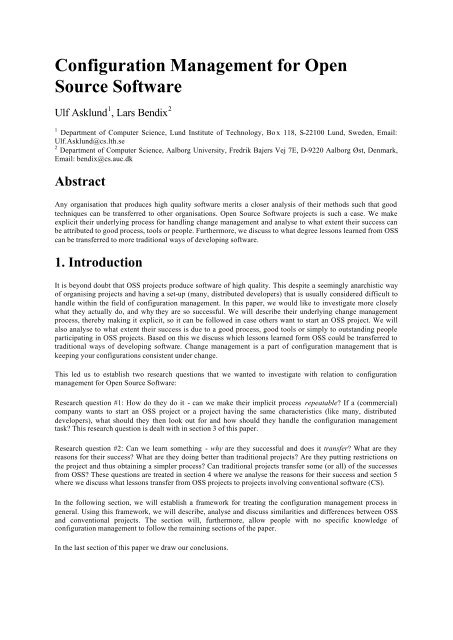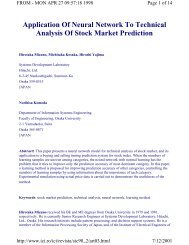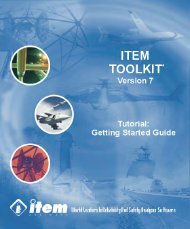Configuration Management for Open Source Software
Configuration Management for Open Source Software - School of ...
Configuration Management for Open Source Software - School of ...
- No tags were found...
You also want an ePaper? Increase the reach of your titles
YUMPU automatically turns print PDFs into web optimized ePapers that Google loves.
<strong>Configuration</strong> <strong>Management</strong> <strong>for</strong> <strong>Open</strong><br />
<strong>Source</strong> <strong>Software</strong><br />
Ulf Asklund 1 , Lars Bendix 2<br />
1 Department of Computer Science, Lund Institute of Technology, Bo x 118, S-22100 Lund, Sweden, Email:<br />
Ulf.Asklund@cs.lth.se<br />
2 Department of Computer Science, Aalborg University, Fredrik Bajers Vej 7E, D-9220 Aalborg Øst, Denmark,<br />
Email: bendix@cs.auc.dk<br />
Abstract<br />
Any organisation that produces high quality software merits a closer analysis of their methods such that good<br />
techniques can be transferred to other organisations. <strong>Open</strong> <strong>Source</strong> <strong>Software</strong> projects is such a case. We make<br />
explicit their underlying process <strong>for</strong> handling change management and analyse to what extent their success can<br />
be attributed to good process, tools or people. Furthermore, we discuss to what degree lessons learned from OSS<br />
can be transferred to more traditional ways of developing software.<br />
1. Introduction<br />
It is beyond doubt that OSS projects produce software of high quality. This despite a seemingly anarchistic way<br />
of organising projects and having a set-up (many, distributed developers) that is usually considered difficult to<br />
handle within the field of configuration management. In this paper, we would like to investigate more closely<br />
what they actually do, and why they are so successful. We will describe their underlying change management<br />
process, thereby making it explicit, so it can be followed in case others want to start an OSS project. We will<br />
also analyse to what extent their success is due to a good process, good tools or simply to outstanding people<br />
participating in OSS projects. Based on this we discuss which lessons learned <strong>for</strong>m OSS could be transferred to<br />
traditional ways of developing software. Change management is a part of configuration management that is<br />
keeping your configurations consistent under change.<br />
This led us to establish two research questions that we wanted to investigate with relation to configuration<br />
management <strong>for</strong> <strong>Open</strong> <strong>Source</strong> <strong>Software</strong>:<br />
Research question #1: How do they do it - can we make their implicit process repeatable? If a (commercial)<br />
company wants to start an OSS project or a project having the same characteristics (like many, distributed<br />
developers), what should they then look out <strong>for</strong> and how should they handle the configuration management<br />
task? This research question is dealt with in section 3 of this paper.<br />
Research question #2: Can we learn something - why are they successful and does it transfer? What are they<br />
reasons <strong>for</strong> their success? What are they doing better than traditional projects? Are they putting restrictions on<br />
the project and thus obtaining a simpler process? Can traditional projects transfer some (or all) of the successes<br />
from OSS? These questions are treated in section 4 where we analyse the reasons <strong>for</strong> their success and section 5<br />
where we discuss what lessons transfer from OSS projects to projects involving conventional software (CS).<br />
In the following section, we will establish a framework <strong>for</strong> treating the configuration management process in<br />
general. Using this framework, we will describe, analyse and discuss similarities and differences between OSS<br />
and conventional projects. The section will, furthermore, allow people with no specific knowledge of<br />
configuration management to follow the remaining sections of the paper.<br />
In the last section of this paper we draw our conclusions.




